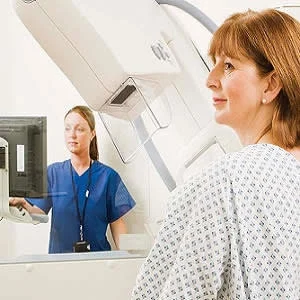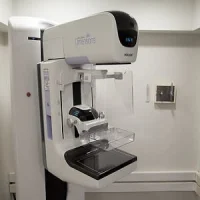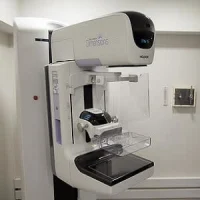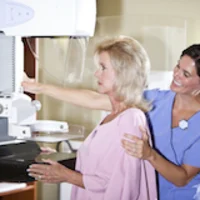Researchers in South Korea have developed a deep-learning algorithm to help with the detection of breast cancer. They used pure data-driven features from raw mammograms without any lesion annotations to develop the algorithm. Results of their study, published in Scientific Reports, show the potential of the new deep-learning model for predicting breast cancer.
The algorithm developed in this study was named data-driven imaging biomarker (DIB; an imaging biomarker derived from large-scale medical image data by using deep learning technology) in mammography (DIB-MG). The basic learning strategy of DIB-MG is weakly supervised learning. Unlike the conventional computer-aided detection (CAD) designs, DIB-MG learns radiologic features from large scale images without any human annotations.
For algorithm development, digital mammography images were retrospectively obtained from PACS. A total of 29,107 digital mammograms from five institutions (4,339 cancer cases and 24,768 normal cases) were included in the data sets. After matching patients’ age, breast density, and equipment, 1,238 and 1,238 cases were chosen as validation and test sets, respectively, and the remainder were used for training. Chi-square tests were used to see whether there was any difference in categorical variables between training, validation and test sets. With validation and test sets, diagnostic performances were measured. The AUC values were compared between the validation and test sets using chi-square statistics.
The core algorithm of DIB-MG is a deep convolutional neural network – a deep learning algorithm specialised for images. Each sample (case) is an exam composed of 4-view images (RCC, RMLO, LCC, and LMLO). For each case in a training set, the cancer probability inferred from DIB-MG is compared with the per-case ground-truth label. Then the model parameters in DIB-MG are updated based on the error between the prediction and the ground-truth.
The results showed that at the operating point (threshold) of 0.5, sensitivity was 75.6% and 76.1% when specificity was 90.2% and 88.5%, and AUC was 0.903 and 0.906 for the validation and test sets, respectively.
The study is the first to apply deep learning algorithms in mammography without pixel-level supervision.
"Our data showed that sensitivity for breast cancer detection was similar for non-dense breasts and dense breasts. However, specificity decreased as breast density increased. Eventually, low specificity was directly related with increasing false-positives, so we need to develop algorithms increasing specificity in the future," the researchers noted.
Further studies using a large number of high-quality data including benign cases are needed to further investigate DIB-MG's feasibility as a screening tool, according to the research team.
Source: Scientific Reports
Image Credit: Health.mil
References:
Kim EK, Kim HE, Han K et al. (2018) Applying Data-driven Imaging Biomarker in Mammography for Breast Cancer Screening: Preliminary Study. Scientific Reports 8:2762 doi:10.1038/s41598-018-21215-1
Latest Articles
breast cancer screening, Mammograms, AI algorithm, deep-learning algorithm
Researchers in South Korea have developed a deep-learning algorithm to help with the detection of breast cancer. They used pure data-driven features from raw mammograms without any lesion annotations to develop the algorithm. Results of their study, publi










